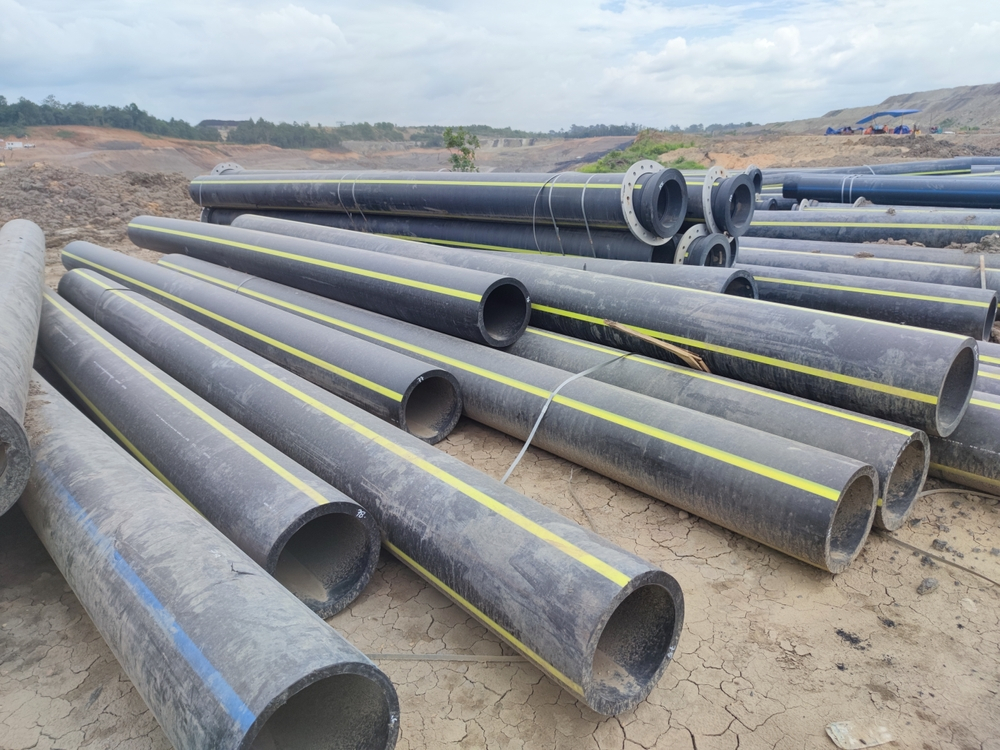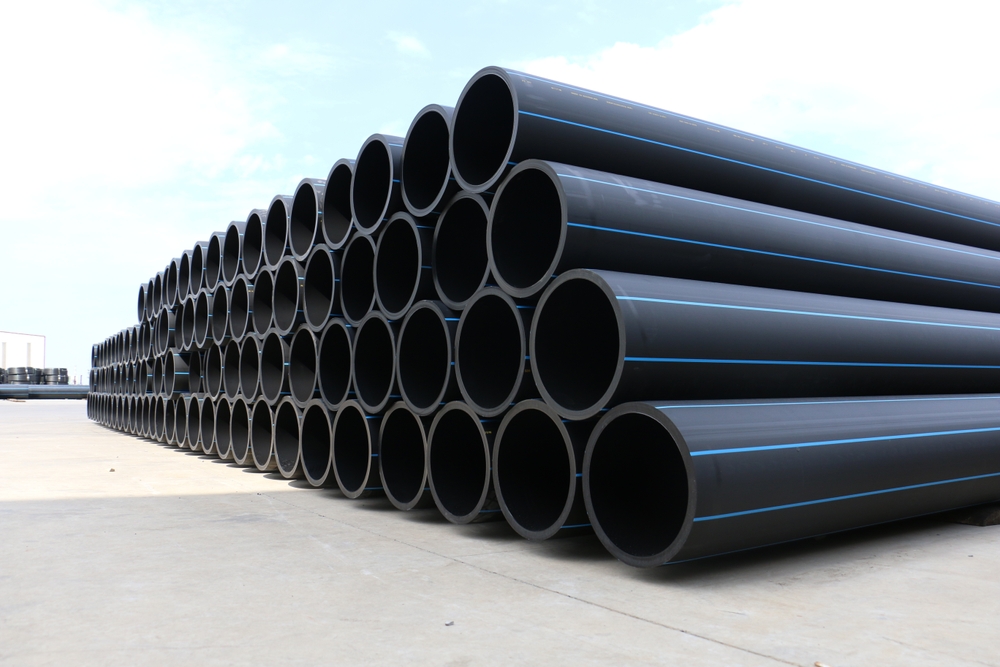Comprehensive Walkthrough to Installing hdpe pipe fittings Midland TX for Efficient Performance
Explore the Manufacturing Process Behind High-Quality HDPE Pipeline and Its Applications
The production process of high-quality HDPE pipes is detailed and methodical. It starts with the selection of raw products that enhance efficiency. Following this, ethylene undertakes polymerization to develop resin, which is then shaped through extrusion. Quality control is paramount, guaranteeing that the end product satisfies stringent standards. The journey of HDPE pipes does not end with manufacturing. Their applications across different markets disclose a wider significance worth analyzing.
Recognizing HDPE: Qualities and Advantages

High-density polyethylene (HDPE) is a flexible thermoplastic known for its resilience and resistance to various environmental elements. This product exhibits outstanding tensile stamina, making it suitable for requiring applications. Its low-density framework adds to a light-weight item, helping with convenience of taking care of and installation. HDPE also showcases remarkable resistance to chemicals, which minimizes destruction when exposed to severe compounds.
The material's reduced wetness absorption even more boosts its durability, making it ideal for usage in pipelines and storage space containers. Furthermore, HDPE is immune to ultraviolet (UV) radiation, ensuring that items maintain their honesty even when exposed to sunlight. Its flexibility permits for the development of intricate forms without compromising toughness. The environmentally friendly nature of HDPE, often stemmed from recycled products, includes in its allure, advertising lasting methods in production. Generally, these properties and benefits make HDPE a preferred selection for numerous commercial and customer applications.
Resources Option for HDPE Production
The selection of resources for HDPE production is vital to confirm the end product fulfills the preferred specifications and quality requirements. High-density polyethylene (HDPE) is largely produced from polymerized ethylene, originated from fossil fuels such as gas or petroleum. The high quality of these feedstocks substantially influences the mechanical and thermal homes of the final HDPE.
Ingredients also play a considerable role in improving HDPE's performance, including anti-oxidants, UV stabilizers, and colorants, which improve toughness and resistance to ecological aspects. The choice procedure need to take into consideration not only the chemical structure of the raw products but also their processing features to assure effective production.
Furthermore, the sourcing of basic materials need to focus on sustainability and conformity with environmental regulations, as accountable practices are crucial in today's market. Eventually, mindful basic material selection lays the foundation for generating top quality HDPE pipelines appropriate for diverse applications.
The Extrusion Process: Forming HDPE Pipeline
The extrusion process plays a crucial duty in forming HDPE pipelines, starting with careful material prep work techniques that guarantee excellent circulation and uniformity. Just as essential is the design of the die, which directly influences the last dimensions and surface quality of the pipe. Together, these factors contribute greatly to the efficiency and quality of HDPE pipe manufacturing.
Product Prep Work Methods
Effective manufacturing of HDPE pipes begins with careful material preparation techniques, particularly the extrusion procedure. During this phase, high-density polyethylene resin is initial dried out to remove dampness, making certain perfect flow qualities. The material is then fed right into the extruder, where it goes through heating and melting, transforming into a viscous state. This home heating procedure is carefully controlled to keep the product's honesty and performance. The molten HDPE is forced with a die, shaping it into a continuous pipe form. Appropriate temperature level administration throughout extrusion is essential, as it directly impacts the material's buildings and the last product high quality. As soon as shaped, the HDPE pipe is cooled down and reduced to specified lengths, ready for subsequent handling and applications.
Die Style Significance
Precision in die design plays an essential duty in the extrusion procedure of HDPE pipes. The die acts as the final shaping device, straight influencing the pipeline's measurements, wall thickness, and surface coating. A well-designed die guarantees uniform product circulation, minimizing issues such as irregularities and vulnerable points. The geometry of the die must be optimized to suit the certain residential properties of HDPE, including its thickness and thermal actions during extrusion. Additionally, the cooling rate of the product as it passes through the die can noticeably impact the pipeline's structural stability. Spending in sophisticated die technology is vital for suppliers aiming to produce premium HDPE pipelines that fulfill sector standards and client expectations.
High Quality Control Actions in HDPE Manufacturing
Although numerous factors influence the top quality of HDPE pipe production, reliable quality control procedures are essential to ensure uniformity and integrity in the end product. Secret top quality control practices consist of strenuous product inspection, verifying that the raw polyethylene satisfies established standards for purity and thickness. During the extrusion procedure, criteria such as temperature, pressure, and cooling time are carefully checked to keep dimensional precision and structural integrity
In addition, post-production testing is crucial; suppliers usually perform hydrostatic examinations to assess the pipeline's stamina and resistance to pressure. Visual inspections for surface defects better boost high quality assurance. Accreditation from pertinent standards organizations, like ASTM or ISO, offers an additional layer of trustworthiness. By applying these complete quality assurance measures, suppliers can minimize defects, boost performance, and ensure that the HDPE pipelines meet the specific needs of various applications, inevitably causing customer complete satisfaction and trust in the item.
Applications of HDPE Pipeline Throughout Industries
HDPE pipes are made use of across various industries because of their longevity and adaptability. In water distribution systems, they ensure reliable distribution, while in wastewater management, they give dependable remedies for waste transport. Additionally, farming irrigation networks gain from HDPE's resistance to deterioration and flexibility, making it an optimal selection for modern farming methods.

Water Circulation Solutions
A significant number of sectors depend on high-density polyethylene (HDPE) pipelines for effective water distribution systems. Known for their durability and resistance to deterioration, HDPE pipelines are commonly utilized in metropolitan water system networks, farming irrigation, and industrial applications. Their light-weight nature promotes very easy handling and installation, reducing labor expenses and time. Additionally, HDPE pipelines can fit different pressure degrees, making them appropriate for both reduced and high-pressure systems. hdpe pipe suppliers Midland TX. The adaptability of the material permits seamless assimilation into existing framework, lessening the requirement for comprehensive excavation. Furthermore, HDPE's resistance to chemical seeping guarantees that the water provided stays safe and tidy, making it an optimal selection for maintaining the top quality of drinkable water throughout various fields
Wastewater Management Solutions
Reliable water distribution systems additionally lead the way for innovative wastewater monitoring remedies, where high-density polyethylene (HDPE) pipelines play a considerable duty. Popular for their durability and resistance to rust, HDPE pipes are ideal for transporting wastewater in numerous setups. Their versatility permits very easy installment in complex environments, lessening the requirement for considerable excavation. Furthermore, HDPE's smooth indoor surface minimizes friction, enhancing circulation rates and efficiency. These pipelines are likewise resistant to chemical leaching, making certain pvc tee that impurities do not jeopardize the surrounding environment. Industries, towns, and therapy facilities increasingly count on HDPE pipelines for their dependability and durability, making them a preferred selection for contemporary wastewater management systems. This versatility highlights the critical relevance of HDPE pipes throughout many applications.
Agricultural Irrigation Networks
Agricultural irrigation networks profit significantly from making use of high-density polyethylene (HDPE) pipelines, which provide reliable and dependable water distribution to plants. HDPE pipelines are light-weight, making them easy to move and mount, while their versatility allows for numerous arrangements in varied surfaces. These pipes show exceptional resistance to rust, chemicals, and UV radiation, ensuring longevity in harsh agricultural environments. Additionally, their smooth indoor surface area minimizes friction loss, maximizing water circulation and decreasing energy prices associated with pumping. The longevity of HDPE pipelines, often surpassing half a century, adds to decrease upkeep and substitute expenses. As a result, farmers significantly count on HDPE pipes to enhance watering effectiveness and advertise lasting farming techniques, inevitably bring about boosted plant returns and source preservation.
Future Trends in HDPE Pipeline Technology
As the need for lasting and effective framework grows, innovations in HDPE pipe innovation are positioned to transform different sectors. Emerging patterns consist of the assimilation of smart modern technologies, such as sensors and IoT abilities, which promote real-time monitoring of pipe problems, reducing maintenance prices and avoiding leakages. Furthermore, the development of sophisticated production strategies, such as 3D printing, is enabling the production of complex, personalized pipeline layouts that provide to particular job requirements.
Moreover, the focus on recycling and circular economic climate methods is driving the technology of HDPE pipelines made from recycled materials, enhancing sustainability. Boosted jointing approaches, such as electro-fusion and mechanical fittings, are also enhancing installment effectiveness and reliability. Lastly, the growing emphasis on environmental regulations is pressing producers to adopt greener manufacturing procedures, ensuring that HDPE pipelines not only fulfill market requirements but also promote an even more sustainable future for facilities advancement.
Frequently Asked Concerns
How Does HDPE Contrast to Various Other Plastic Products?
HDPE outshines numerous other plastic products concerning toughness, chemical resistance, and adaptability. Its reduced thickness and high tensile toughness make it excellent for different applications, usually exceeding options in both performance and durability.
What Are the Ecological Influences of HDPE Production?
The ecological impacts of HDPE production include greenhouse gas emissions, energy consumption, and potential air pollution from making processes. Furthermore, inappropriate disposal can lead to soil and water contamination, raising concerns about long-lasting eco-friendly results.
Can HDPE Pipes Be Recycled?
Yes, HDPE pipelines can be reused. Several facilities approve utilized HDPE for handling, changing it right into brand-new items. This reusing contributes to sustainability efforts, reducing plastic waste while preserving sources and power in the production cycle.
What Is the Life-span of HDPE Piping?

Just How Do Temperature Level Variations Impact HDPE Pipeline Efficiency?
Temperature variations significantly influence HDPE pipeline performance, influencing versatility and toughness. High temperature levels can result in softening, while low temperatures might cause brittleness, inevitably affecting the pipe's longevity and viability for different applications in varied environments.